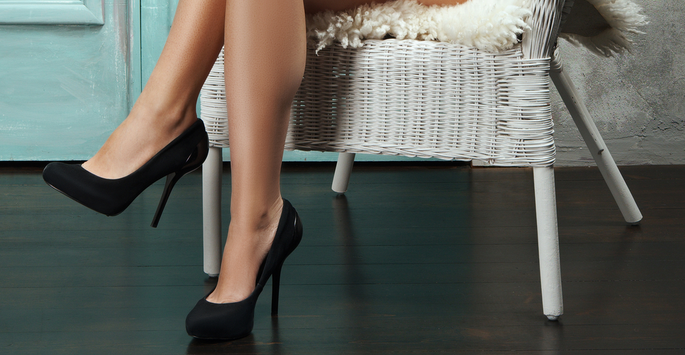What is Vein Ablation?

Vein ablation is the removal or purposeful degradation of an unwanted venous canal such as a spider vein or varicose vein. These present an unwelcome appearance and are most commonly found on the legs. The reddish or purplish patch of skin is highly visible and can cause the individual to become quite self-conscious. In rare cases, an abnormal near-surface vein can even cause throbbing and pain. Several treatment options are available. We suggest talking to us if you’re considering removal of a varicose vein.
We specialize in minimally invasive vein ablation techniques, and the method we recommend will depend on the size of the vein, how splintered and twisted it is, and how deep below the surface it exists. Below, we offer an overview of the treatment types and describe how the vein is ablated.
Sclerotherapy
This is the most common treatment for spider veins and varicose veins. The vein ablation procedure is very simple. We prepare a special saline solution and inject this solution directly into the vein. The blood in these veins travels very slowly because there are no valves or at least no fully functioning ones. There’s often very little blood pressure in the vein at all.
The solution irritates the vein walls. They begin to stick together, and this stops the blood flow. After a few days, the vein begins to collapse. No surgery is required to remove the damaged vein tissue. It will be discarded along with other waste. We may recommend the wearing of compression stockings for a while after receiving this treatment. Otherwise, post-treatment recovery is just a matter of staying off the feet as much as possible for several days.
Laser Ablation
If the vein is rather straight and has few twists or feeder veins, we may choose to cauterize it. For this, we target the vein walls using a thin, concentrated beam of laser energy. We can calibrate the instrument to deliver energy that will create a tiny channel in the skin. Most of the energy gets absorbed by the vein wall. This causes the area of heat absorption to constrict. The wall is in essence shut off permanently. The vein wall itself now receives no nutrition and becomes discarded material. The spider vein or varicose vein slowly but surely fades from view.
Radiofrequency Treatment
We may choose to insert a tiny tube, called a catheter, inside the vein. The catheter has a small probe that emits energy in the radiofrequency range. This damages the vein wall and causes it to constrict. The blood flow is redirected to a larger feeder vein. Over the next few weeks, the spider vein or varicose vein is gone.
It’s highly unlikely that another unwanted vein will develop in the same area. History has shown that spider veins and varicose veins develop without an obvious cause, and their locations are unpredictable. The treatments described here usually result in complete, successful, and permanent ablation of the vein.
Get Your Self-Confidence Back
If you’re tired of unwelcome near-surface veins that look red or purple, feel free to reach out and make an appointment with O’Donnell Vein and Laser. At our convenient locations in Annapolis and Easton, our caring and devoted team of professionals will be pleased to explain vein ablation in full and answer any questions you may have. Contact us today to set up your consultation – we look forward to speaking with you!



